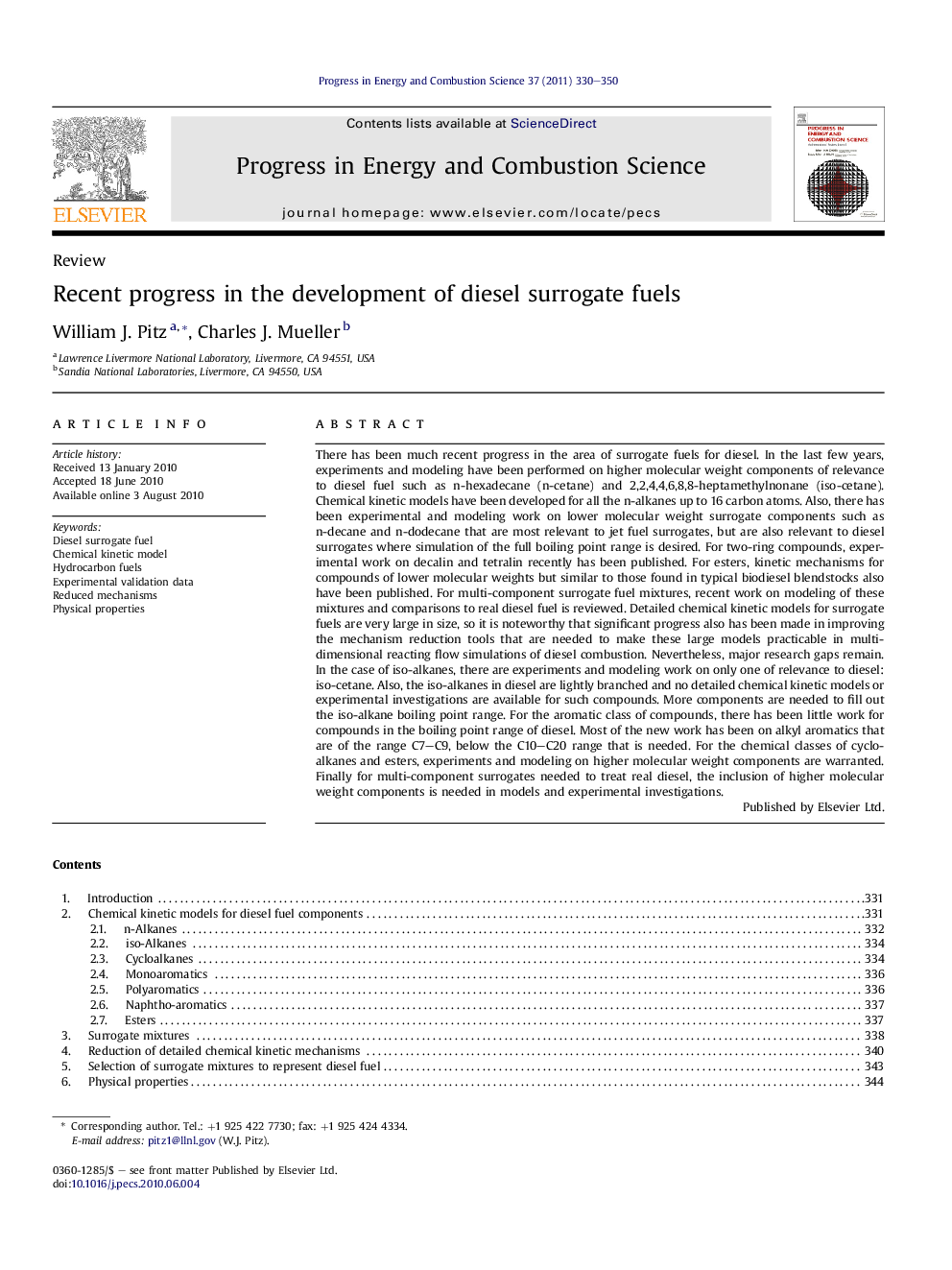| Article ID | Journal | Published Year | Pages | File Type |
|---|---|---|---|---|
| 241781 | Progress in Energy and Combustion Science | 2011 | 21 Pages |
There has been much recent progress in the area of surrogate fuels for diesel. In the last few years, experiments and modeling have been performed on higher molecular weight components of relevance to diesel fuel such as n-hexadecane (n-cetane) and 2,2,4,4,6,8,8-heptamethylnonane (iso-cetane). Chemical kinetic models have been developed for all the n-alkanes up to 16 carbon atoms. Also, there has been experimental and modeling work on lower molecular weight surrogate components such as n-decane and n-dodecane that are most relevant to jet fuel surrogates, but are also relevant to diesel surrogates where simulation of the full boiling point range is desired. For two-ring compounds, experimental work on decalin and tetralin recently has been published. For esters, kinetic mechanisms for compounds of lower molecular weights but similar to those found in typical biodiesel blendstocks also have been published. For multi-component surrogate fuel mixtures, recent work on modeling of these mixtures and comparisons to real diesel fuel is reviewed. Detailed chemical kinetic models for surrogate fuels are very large in size, so it is noteworthy that significant progress also has been made in improving the mechanism reduction tools that are needed to make these large models practicable in multi-dimensional reacting flow simulations of diesel combustion. Nevertheless, major research gaps remain. In the case of iso-alkanes, there are experiments and modeling work on only one of relevance to diesel: iso-cetane. Also, the iso-alkanes in diesel are lightly branched and no detailed chemical kinetic models or experimental investigations are available for such compounds. More components are needed to fill out the iso-alkane boiling point range. For the aromatic class of compounds, there has been little work for compounds in the boiling point range of diesel. Most of the new work has been on alkyl aromatics that are of the range C7–C9, below the C10–C20 range that is needed. For the chemical classes of cycloalkanes and esters, experiments and modeling on higher molecular weight components are warranted. Finally for multi-component surrogates needed to treat real diesel, the inclusion of higher molecular weight components is needed in models and experimental investigations.
